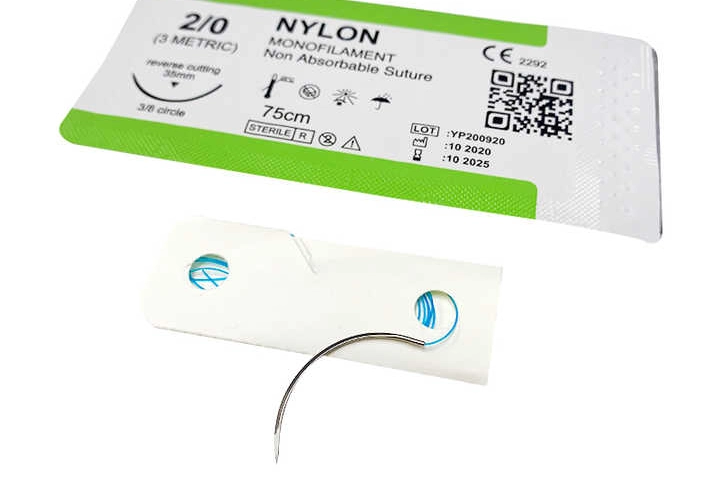.webp)
Spinal needles are essential tools in critical surgery. Doctors use them to reduce pain in surgery, collect spinal fluid for testing, and deliver drugs into the spinal canal. Of many types of needles, pencil point needles are notable for their wise design and patient advantages. This 1,000-word guide explores their main features, practical perks, and direct comparisons with options like cutting-tip and classic Quincke needles—helping medical teams pick the best tool for specific cases.
What Are Spinal Needles?
Spinal needles are finely crafted medical tools built for key tasks in spinal procedures. Their main jobs include:
- Reaching Cerebrospinal Fluid (CSF): Piercing the dura mater to gather CSF for diagnosis.
- Delivering Drugs: Injecting medications directly into the spinal canal for anesthesia or treatment.
- Reducing Harm: Ensuring accurate insertion to lessen patient pain and risks.
These needles are designed to handle the tricky anatomy of the spine. They balance sharpness, strength, and flexibility.
What Makes Pencil Point Spinal Needles Special?
Pencil point spinal needles are a unique type with a gentle, non-cutting tip. Unlike standard needles that cut through tissue, these needles focus on patient safety. They spread tissue fibers apart, reducing damage and issues after procedures.
4 Key Features of Pencil Point Needles
The distinct design of pencil point spinal needles includes:
- Smooth, Non-Cutting Tip: Parts tissue fibers instead of slicing, cutting down on trauma.
- Side Opening: Enables precise drug delivery or CSF collection without extra tissue harm.
- Top-Notch Materials: Usually crafted from medical-grade stainless steel for durability and trust.
- Range of Sizes: Comes in various gauges (e.g., 22G to 27G) and lengths to suit different patients.
These traits make pencil point needles a go-to for procedures needing precision and low risks.
5 Big Benefits of Pencil Point Spinal Needles
Pencil point needles bring clear advantages over other spinal needle types, such as:
- Fewer Post-Dural Puncture Headaches (PDPH): Their gentle tip protects the dura, cutting CSF leak risks by up to 50% compared to cutting needles.
- Better Patient Comfort: Less tissue damage means less pain during and after procedures.
- Quicker Recovery: Minimal tissue disruption helps patients heal faster.
- Sharper Clinician Control: Improved feedback helps doctors place the needle accurately.
- Lower Risks: Reduces chances of local pain, bleeding, or procedure mistakes.
These perks make pencil point needles a top pick in many spinal procedures.
Pencil Point vs. Cutting-Edge Spinal Needles
1. Design Differences
The main difference between pencil point and cutting-edge spinal needles is the tip:
Pencil Point Needles:
- Gentle, rounded tip with a side opening.
- Spreads tissue fibers to limit trauma.
- Built to reduce CSF leaks and PDPH.
Cutting-Edge Needles:
- Sharp, angled tip made to cut through tissue.
- Raises the risk of tissue damage and dural tears.
- Often used for procedures needing quick tissue entry.
2. Clinical Uses
Each needle type fits different needs based on its design:
Pencil Point Needles:
- Great for spinal anesthesia in obstetrics, like cesarean sections.
- Preferred for diagnostic lumbar punctures to keep trauma low.
- Used for precise intrathecal drug delivery.
Cutting-Edge Needles:
- Best for procedures needing fast tissue access, like emergencies.
- Common when larger needles are required.
- Less ideal for sensitive cases due to higher PDPH risk.
3. Clinical Results
- Pencil Point Needles:Studies show a 40–50% drop in PDPH cases compared to cutting-edge designs. This boosts patient happiness.
- Cutting-Edge Needles:Linked to more issues, like CSF leaks and local pain. These can slow recovery.
Pencil Point vs. Quincke Spinal Needles
1. Design Differences
Pencil point and Quincke needles vary greatly in build:
Pencil Point Needles:
- Gentle tip with a side opening for fluid or drug delivery.
- Made from strong stainless steel for steady performance.
- Cuts down on tissue damage and risks.
Quincke Needles:
- Sharp, cutting bevel for fast tissue entry.
- More likely to cause dural tears and CSF leaks.
- Often used in tests needing larger gauges.
2. Benefits for Specific Procedures
Pencil Point Needles:
- Favored in obstetric anesthesia to reduce PDPH and improve comfort.
- Ideal for lumbar punctures needing minimal tissue harm.
- Ensures accurate drug delivery in intrathecal cases.
Quincke Needles:
- Useful for quick-access procedures, like urgent diagnostics.
- Less suited for delicate procedures due to higher trauma risk.
3. Performance Comparison
- Pencil Point Needles:Provide better safety by lowering PDPH and speeding recovery.
- Quincke Needles:Offer fast tissue entry but increase complication risks. This makes them less ideal for sensitive procedures.
Safety and Effectiveness: A 4-Point Breakdown
.webp)
Pencil point spinal needles excel in safety and performance because of:
- Gentle Design: Preserves dural fibers, reducing PDPH cases.
- Better Feedback: Helps doctors navigate complex anatomy with accuracy.
- Less Tissue Harm: Lowers risks of pain, bleeding, and long recoveries.
- Wide Uses: Fits many procedures, from anesthesia to diagnostics.
In contrast, cutting-edge and Quincke needles may increase risks of:
- CSF Leaks: Sharp tips can tear dural fibers.
- Local Pain: More tissue damage causes discomfort.
- Higher PDPH Rates: Especially in obstetric and neurological cases.
- Procedure Challenges: Less feedback can make precise placement harder.
3 Top Uses for Pencil Point Spinal Needles
Pencil point needles are the best choice for:
- Obstetric Anesthesia: Reduces PDPH in cesarean sections, keeping mothers comfortable.
- Diagnostic Lumbar Punctures: Minimizes trauma for accurate CSF collection and patient safety.
- Intrathecal Drug Delivery: Offers precise drug administration with minimal tissue harm.
Why Choose Us
Medco is a trusted supplier of high-quality medical tools, including pencil point spinal needles. Here’s why we stand out:
- Certified Quality: CE0123 and ISO13485 certifications ensure top standards.
- Wide Range: Offers diagnostics, disposables, lab equipment, and more.
- Global Reach: Exports to over 130 countries, serving 3,000+ customers.
- All-in-One Solutions: Blends affordability, quality, and fast delivery.
- 18+ Years of Trust: Relied on by healthcare pros worldwide.
Contact Us:Email sales9@ywmedco.com.cn or call +86-18005895759 to discover our advanced medical solutions.
Conclusion
Pencil point spinal needles are a step ahead in spinal procedure technology. They offer unmatched safety, accuracy, and patient comfort compared to cutting-edge and Quincke needles. Their trauma-controlled mechanism minimizes complications like PDPH, and thus they prove excellent for obstetric anesthesia, lumbar punctures, and intrathecal medication administration. Identifying these differences, doctors can improve procedure outcomes and satisfaction. Partnering with reliable suppliers like Medco ensures access to high-quality pencil point needles, which allows healthcare workers to deliver outstanding care.
FAQ
Q: What are pencil point spinal needles and how do they work?
A: Pencil point tip spinal needles are unique medical instruments used in spinal procedures. They have a smooth, non-coring tip that opens tissues instead of cutting them. It reduces tissue damage and complications. They’re used to collect cerebrospinal fluid (CSF), place medication within the spinal canal, or provide anesthesia, all in a way that keeps the patient relaxed.
Q: In what ways are pencil point needles distinct from cutting-edge or Quincke needles?
A: Pencil point needles have a beveled tip with a side port, which minimizes tissue trauma and CSF leaks. Cutting-edge and Quincke needles have sharp beveled tips that incise tissue and are therefore faster for some procedures but riskier for complications like post-dural puncture headaches (PDPH). Pencil point needles are more focused on safety and comfort, while cutting-edge and Quincke are better for quick access to tissue.




